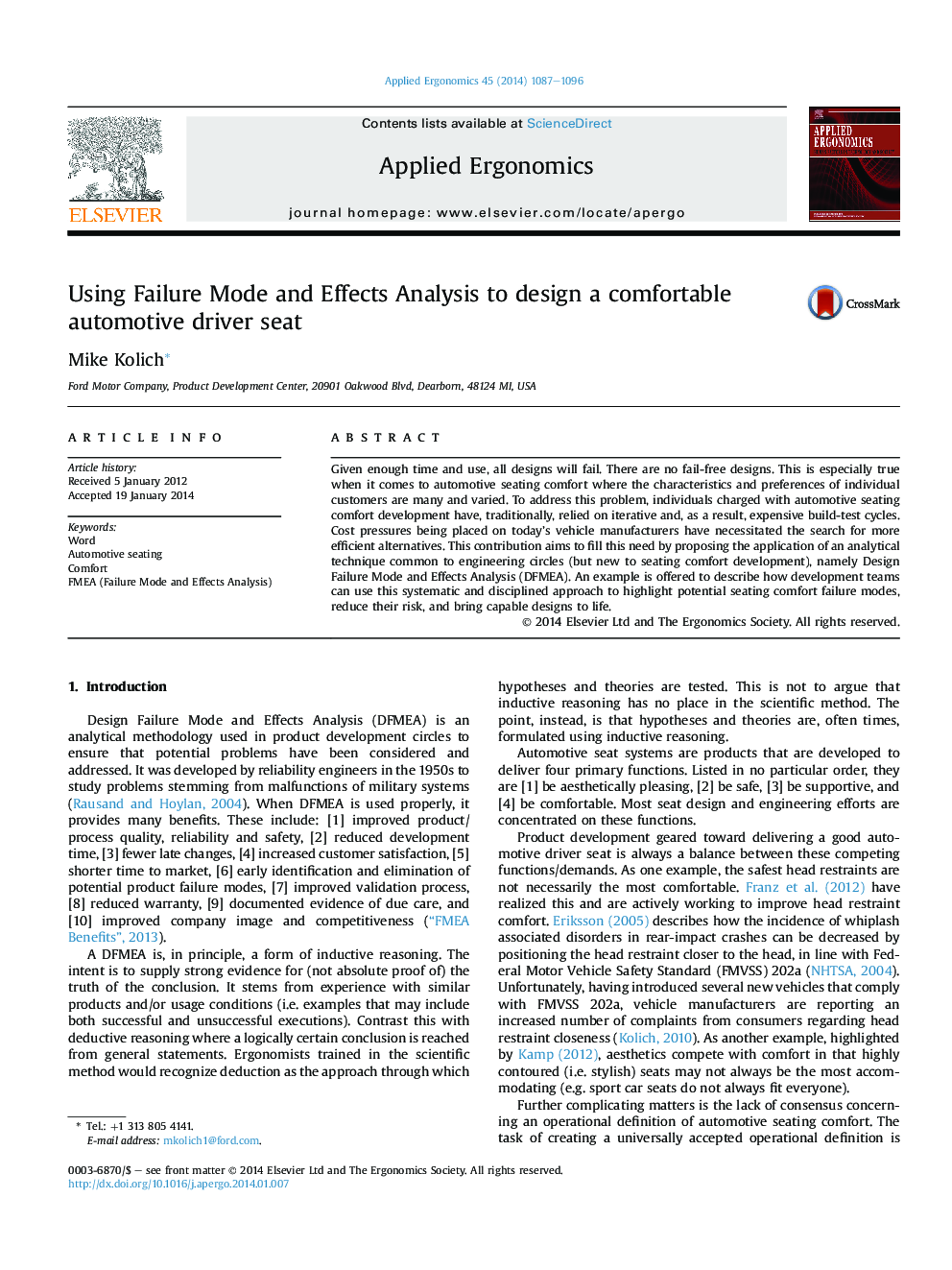| Article ID | Journal | Published Year | Pages | File Type |
|---|---|---|---|---|
| 10365897 | Applied Ergonomics | 2014 | 10 Pages |
Abstract
Given enough time and use, all designs will fail. There are no fail-free designs. This is especially true when it comes to automotive seating comfort where the characteristics and preferences of individual customers are many and varied. To address this problem, individuals charged with automotive seating comfort development have, traditionally, relied on iterative and, as a result, expensive build-test cycles. Cost pressures being placed on today's vehicle manufacturers have necessitated the search for more efficient alternatives. This contribution aims to fill this need by proposing the application of an analytical technique common to engineering circles (but new to seating comfort development), namely Design Failure Mode and Effects Analysis (DFMEA). An example is offered to describe how development teams can use this systematic and disciplined approach to highlight potential seating comfort failure modes, reduce their risk, and bring capable designs to life.
Related Topics
Physical Sciences and Engineering
Computer Science
Human-Computer Interaction
Authors
Mike Kolich,
